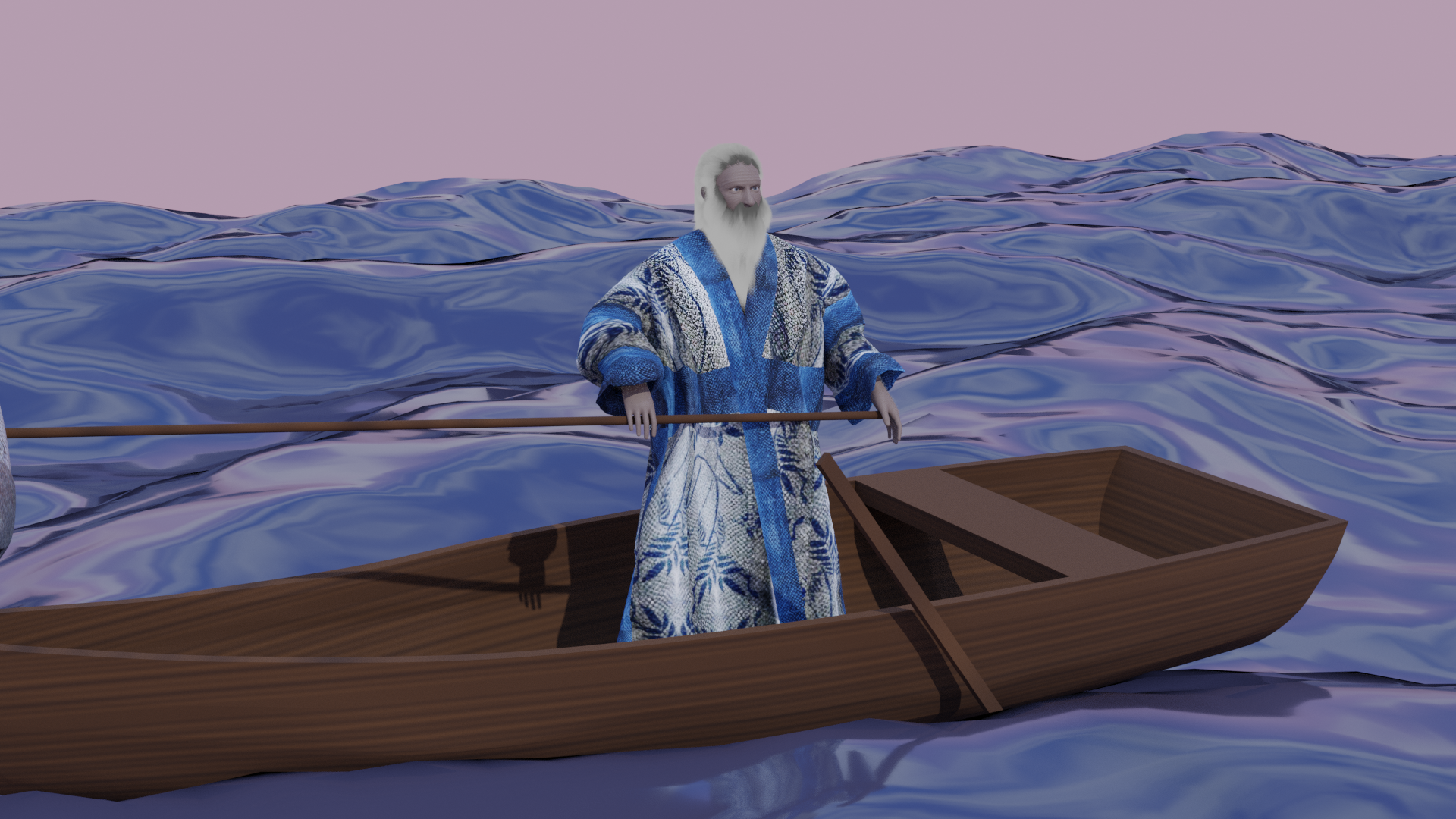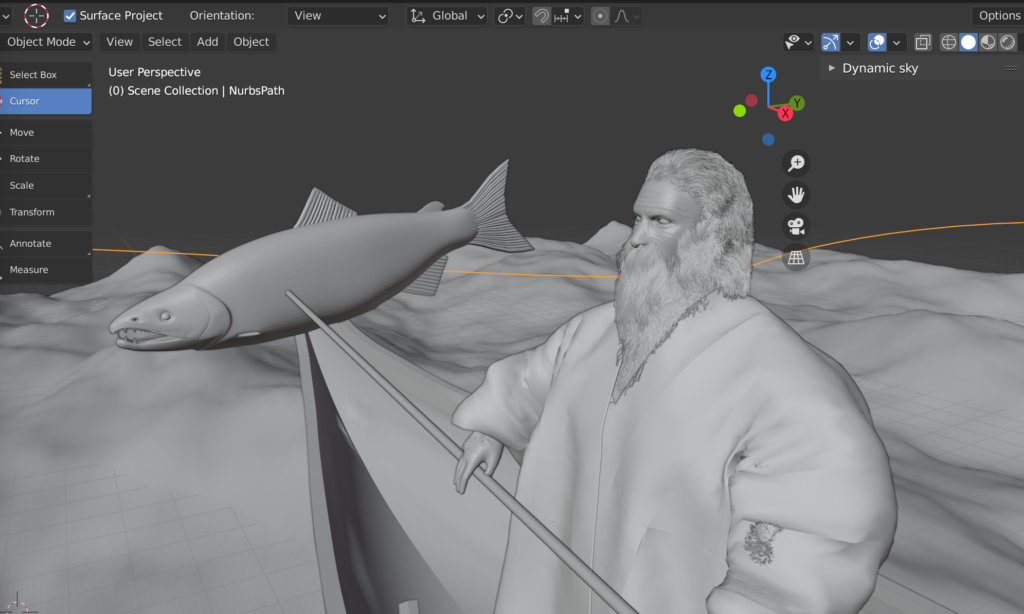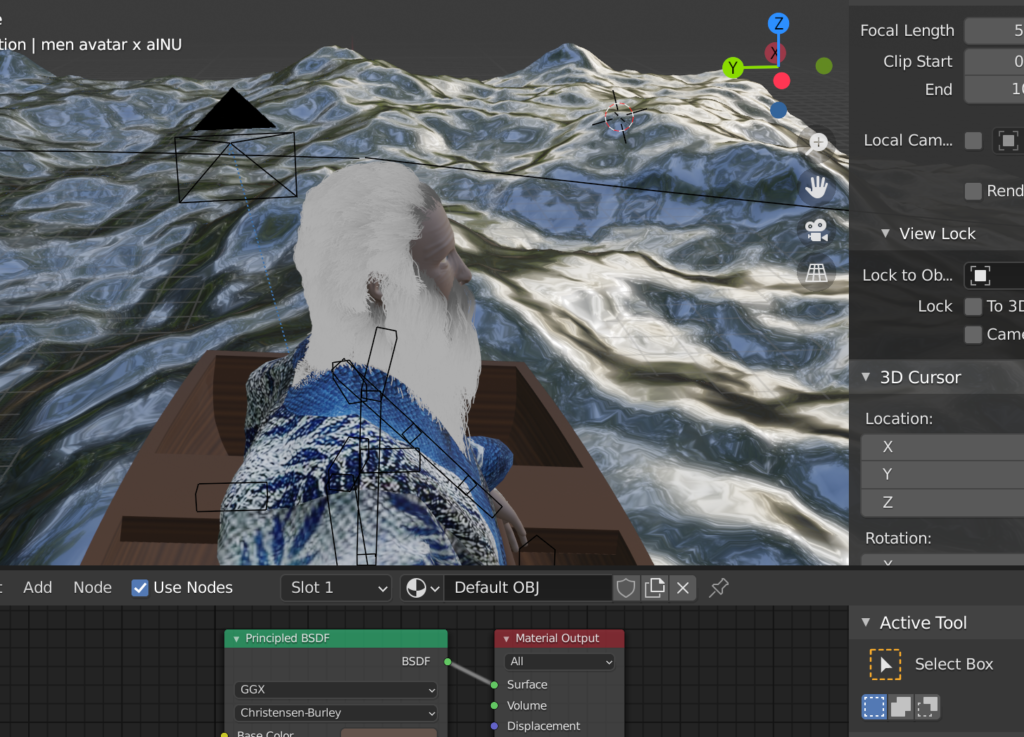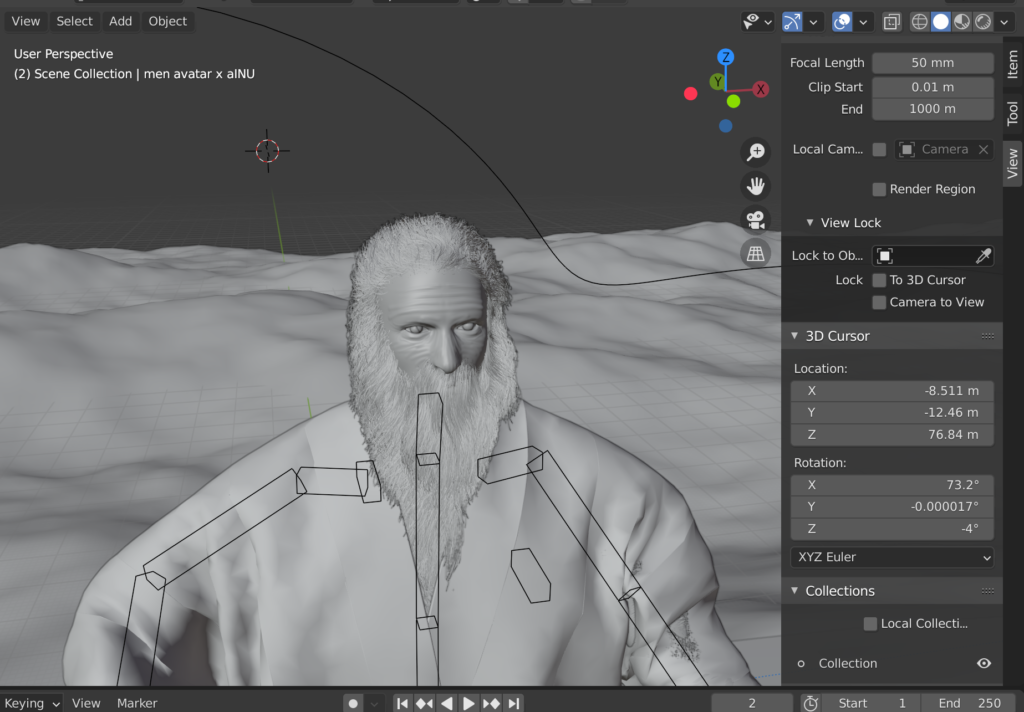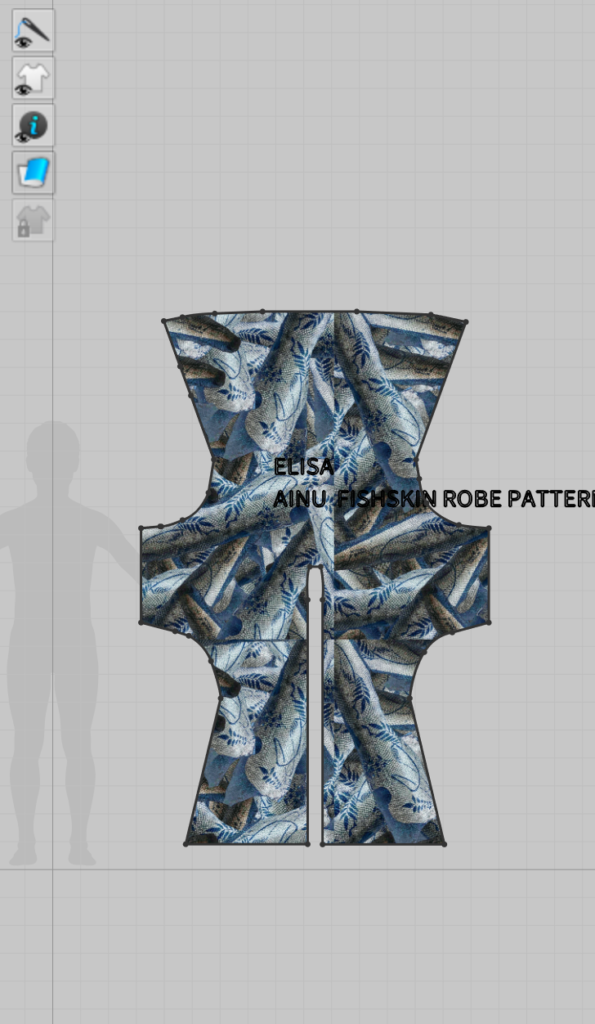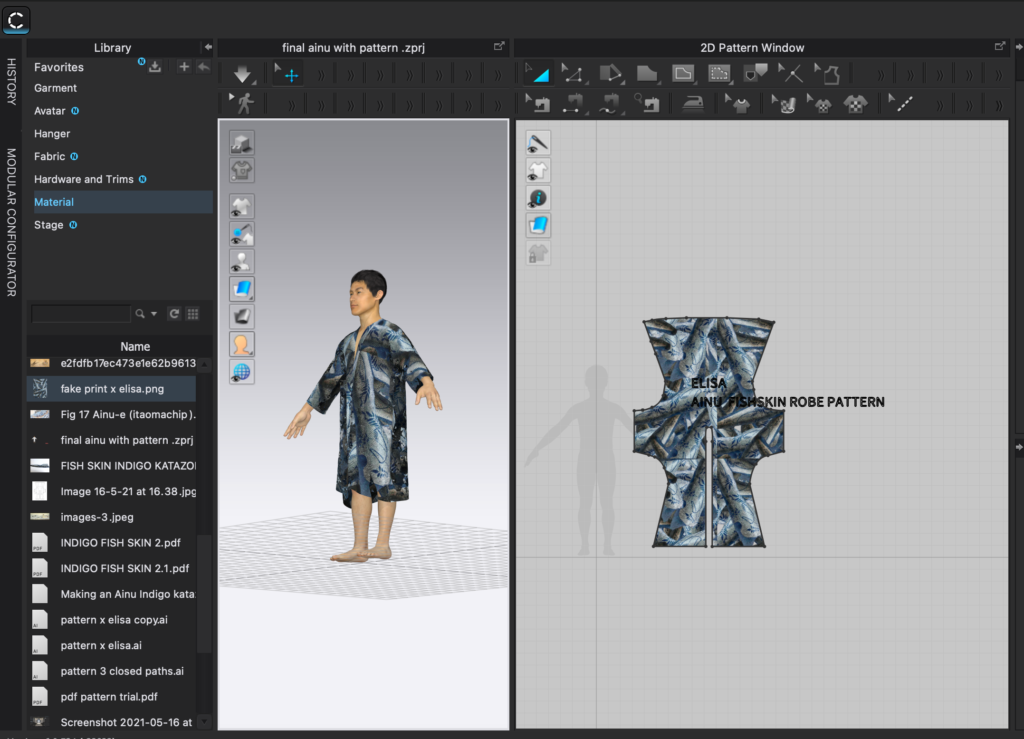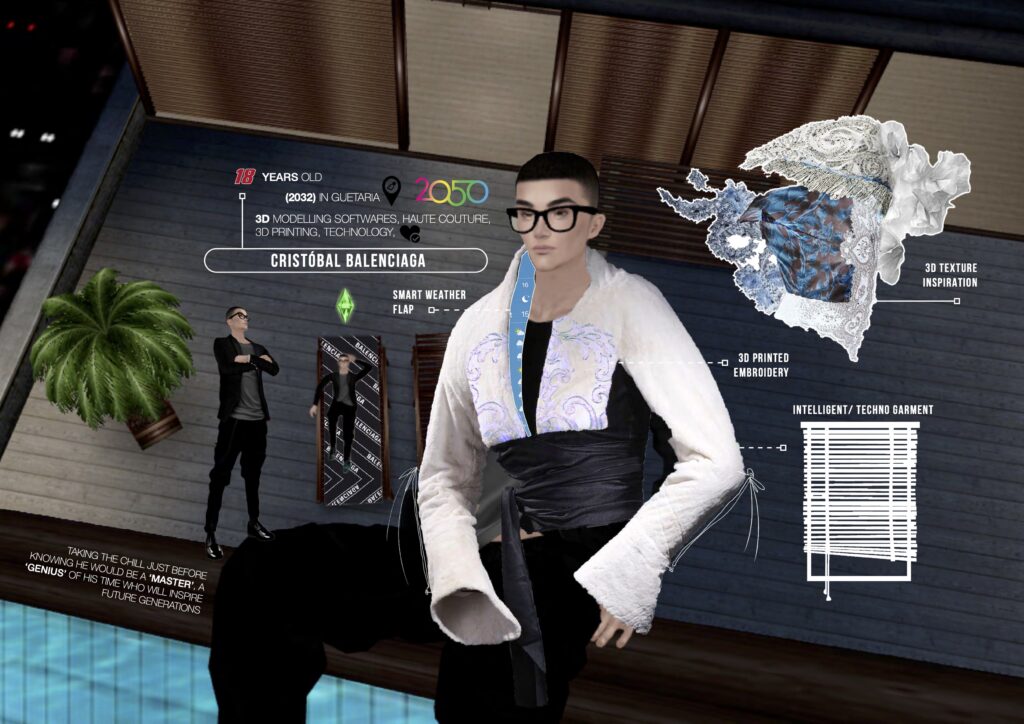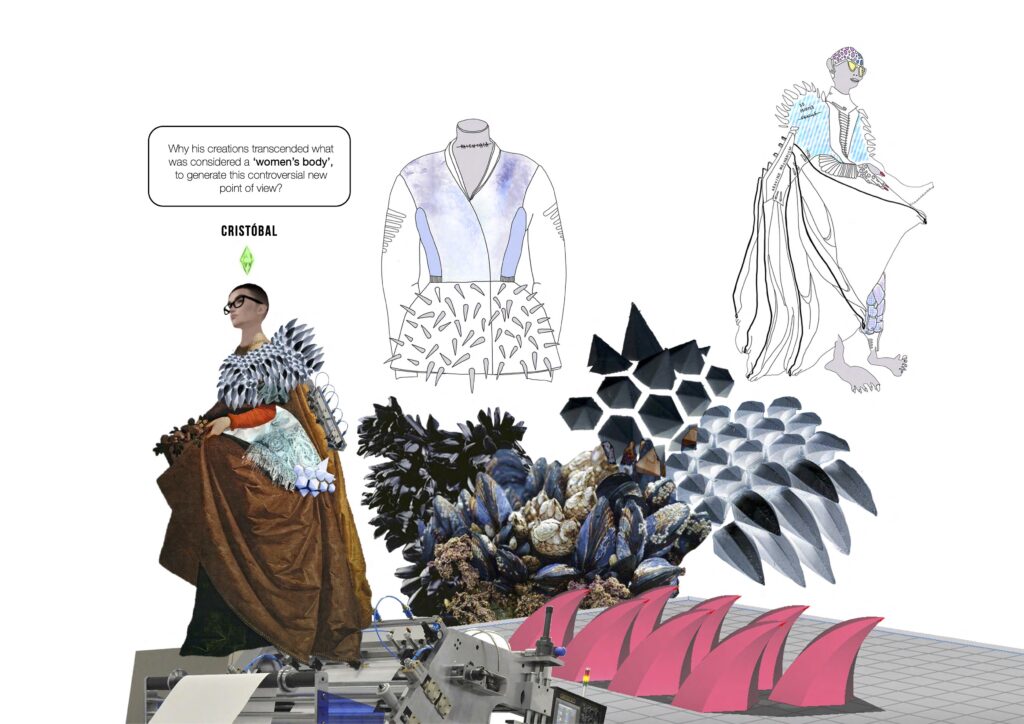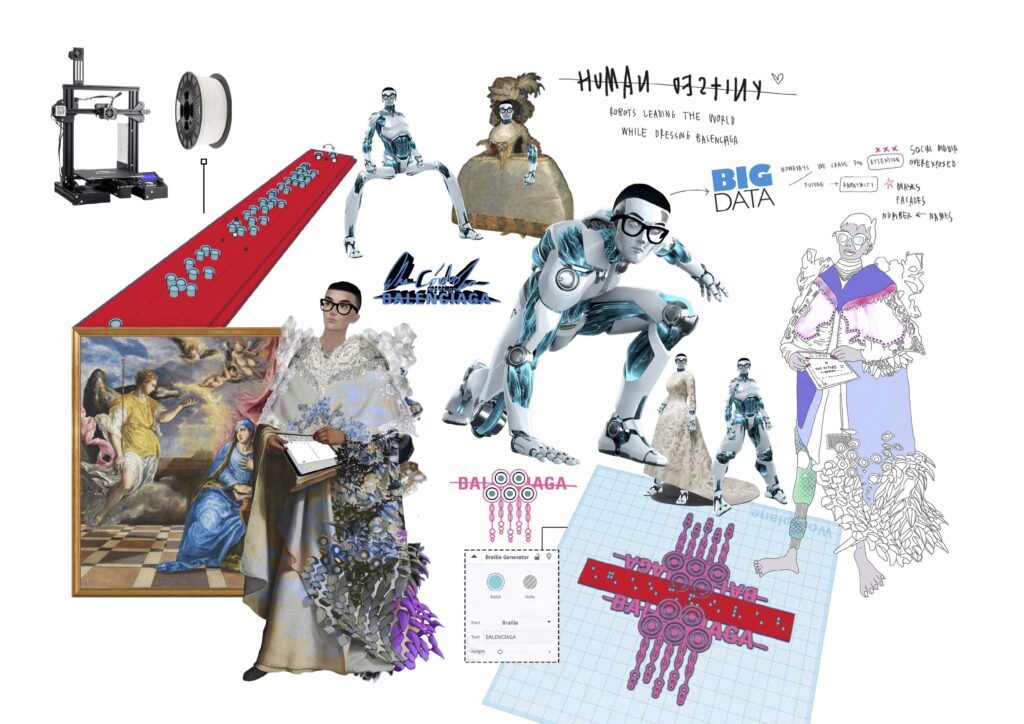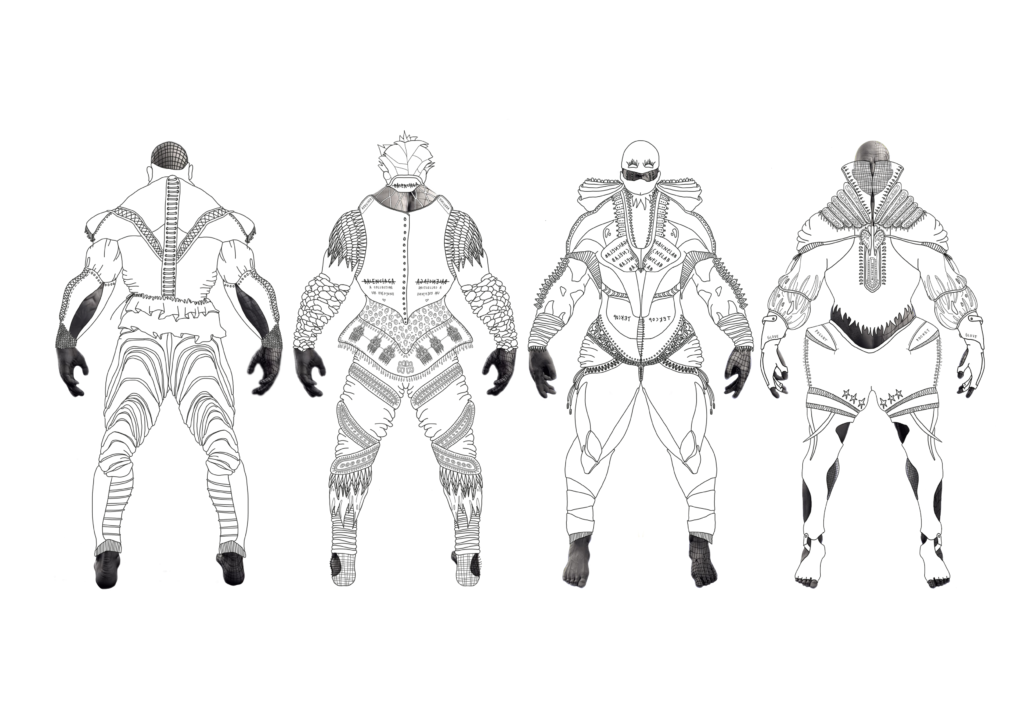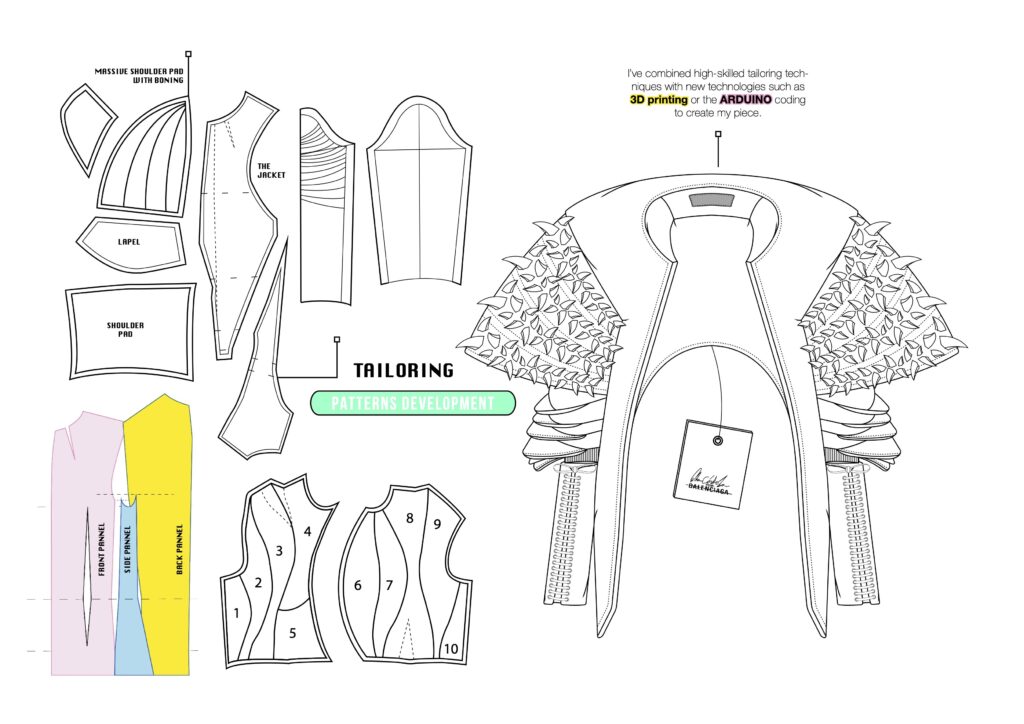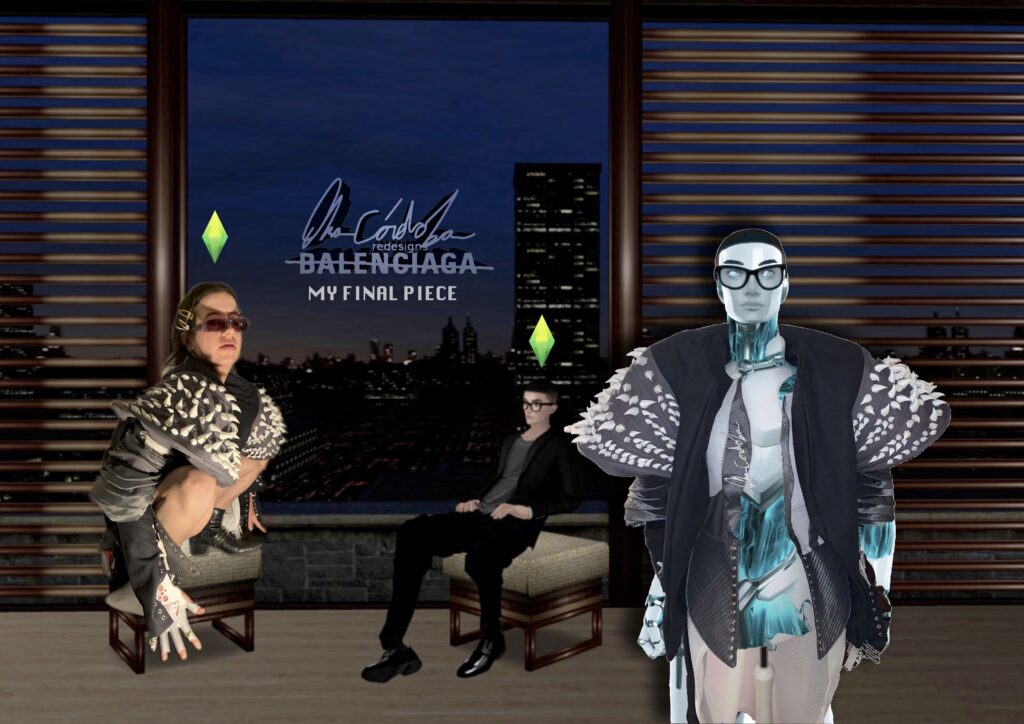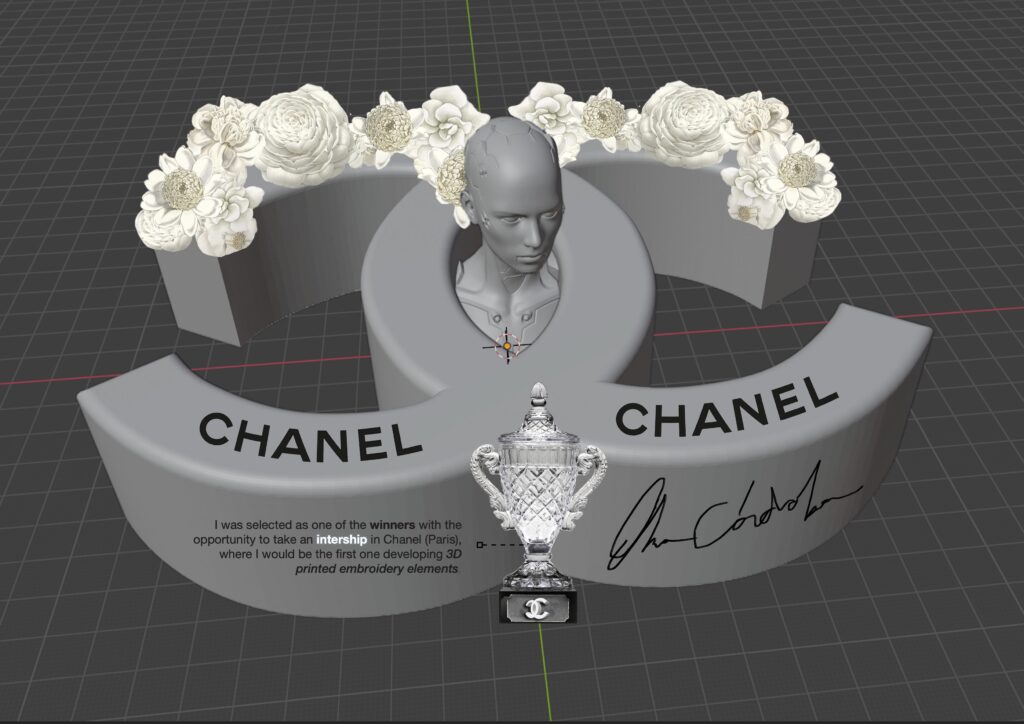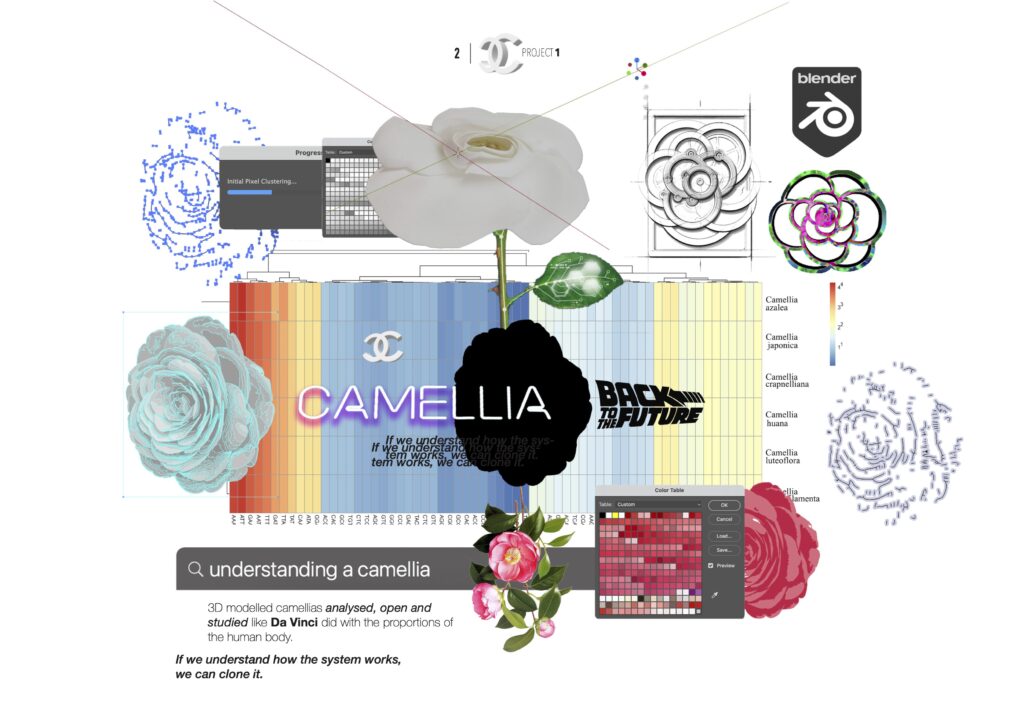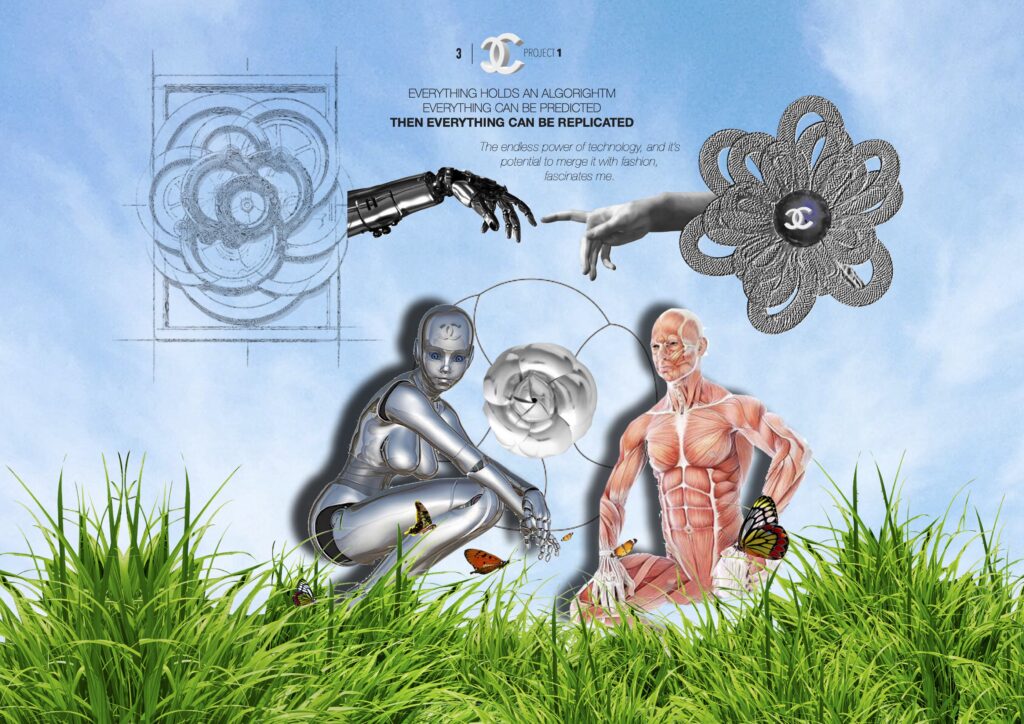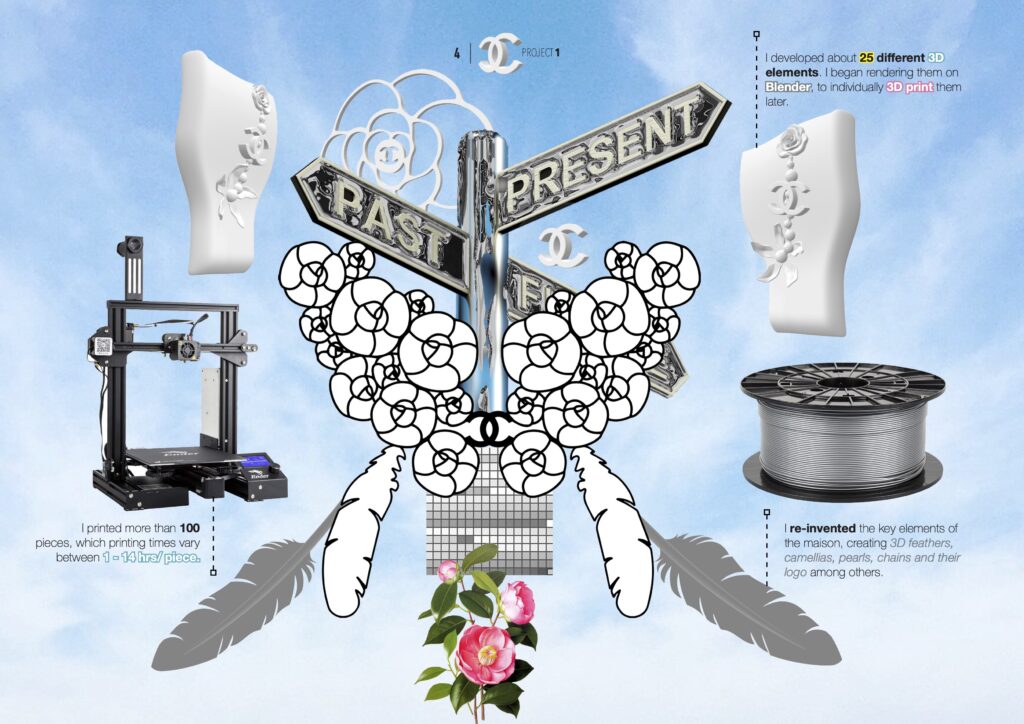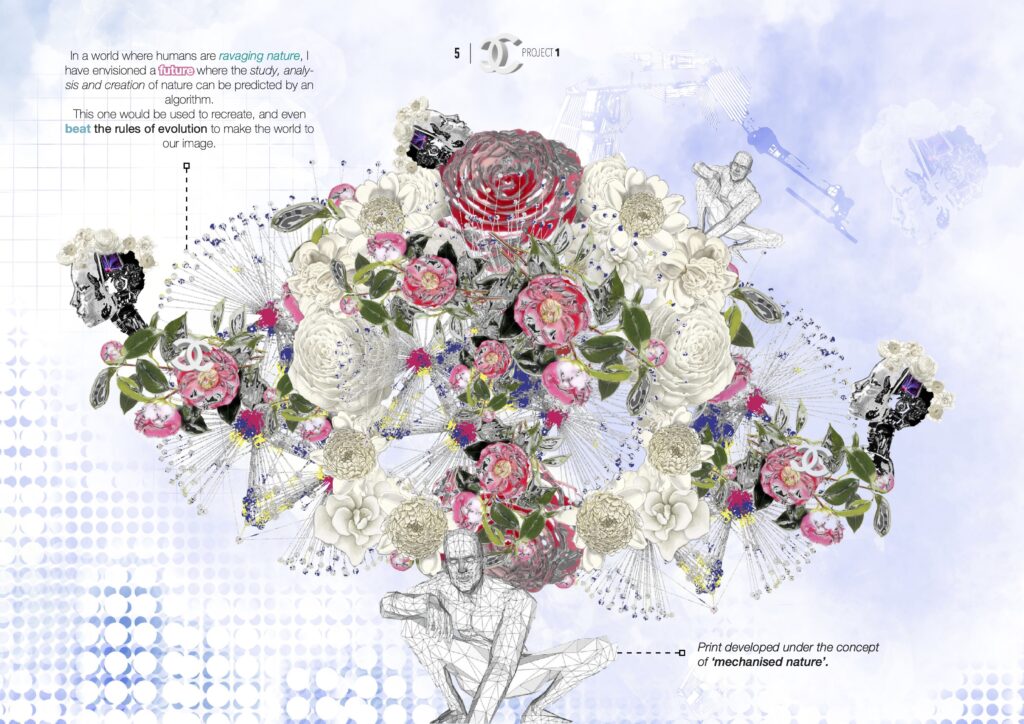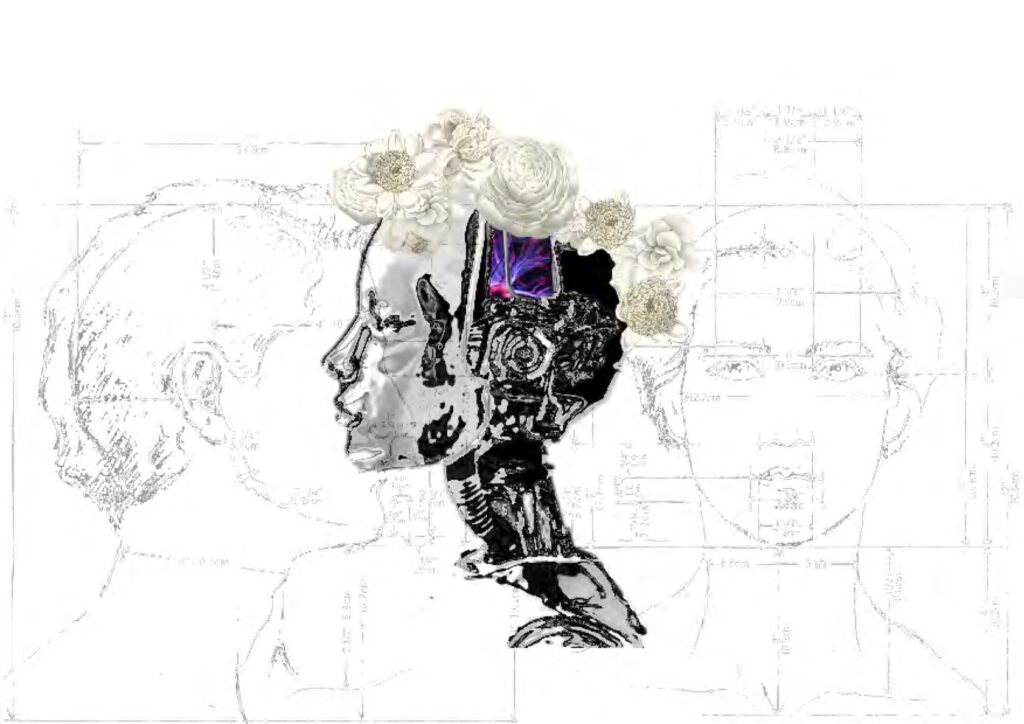MIT Application
CRITICAL MATTER GROUP
SOFT ROBOTIC TOP
Soft Robotics Embedded in a 3D-Printed, Parametrically Designed Top
Of women aged 18-24 said they had been sexually harassed in a public space.
71% of women of all ages say the same.
This project envisions how fashion can transcend its traditional role and act as a protective shield. The garment integrates soft robotics with parametric design, embedding fabric sensors within a 3D-printed filament structure. These sensors detect touch, triggering a soft robotic mechanism embedded within the garment. When activated, the robotics inflate, creating a protective barrier between the wearer and their surroundings.
This reflects the growing presence of facial recognition systems in urban environments and raises concerns about privacy and individual autonomy.
This project was created as an extension of my Fabricademy course in e-textiles.
THE TECHNIQUE
Architectonic shapes meet the human body through the hand of technology
My 3D Dress was one of the most successful pieces from my Final Collection at Central Saint Martins. Each piece was individually 3D printed at home and assembled together using metal rings.

A fashion designer with a technological approach
A fashion designer with a technological approach
A fashion designer with a technological approach
A fashion designer with a technological approach
A fashion designer with a technological approach
A fashion designer with a technological approach
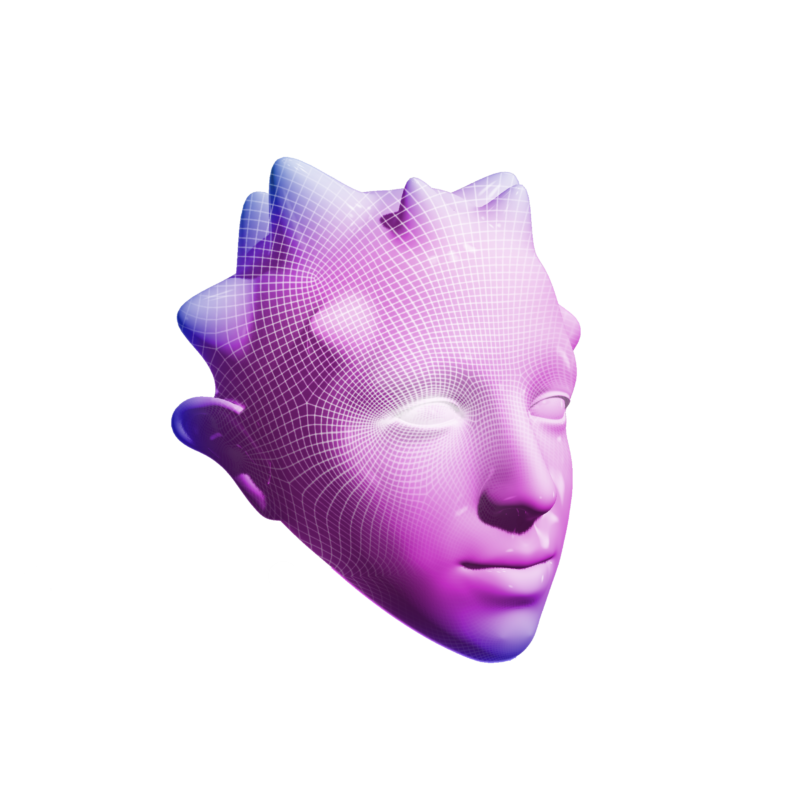
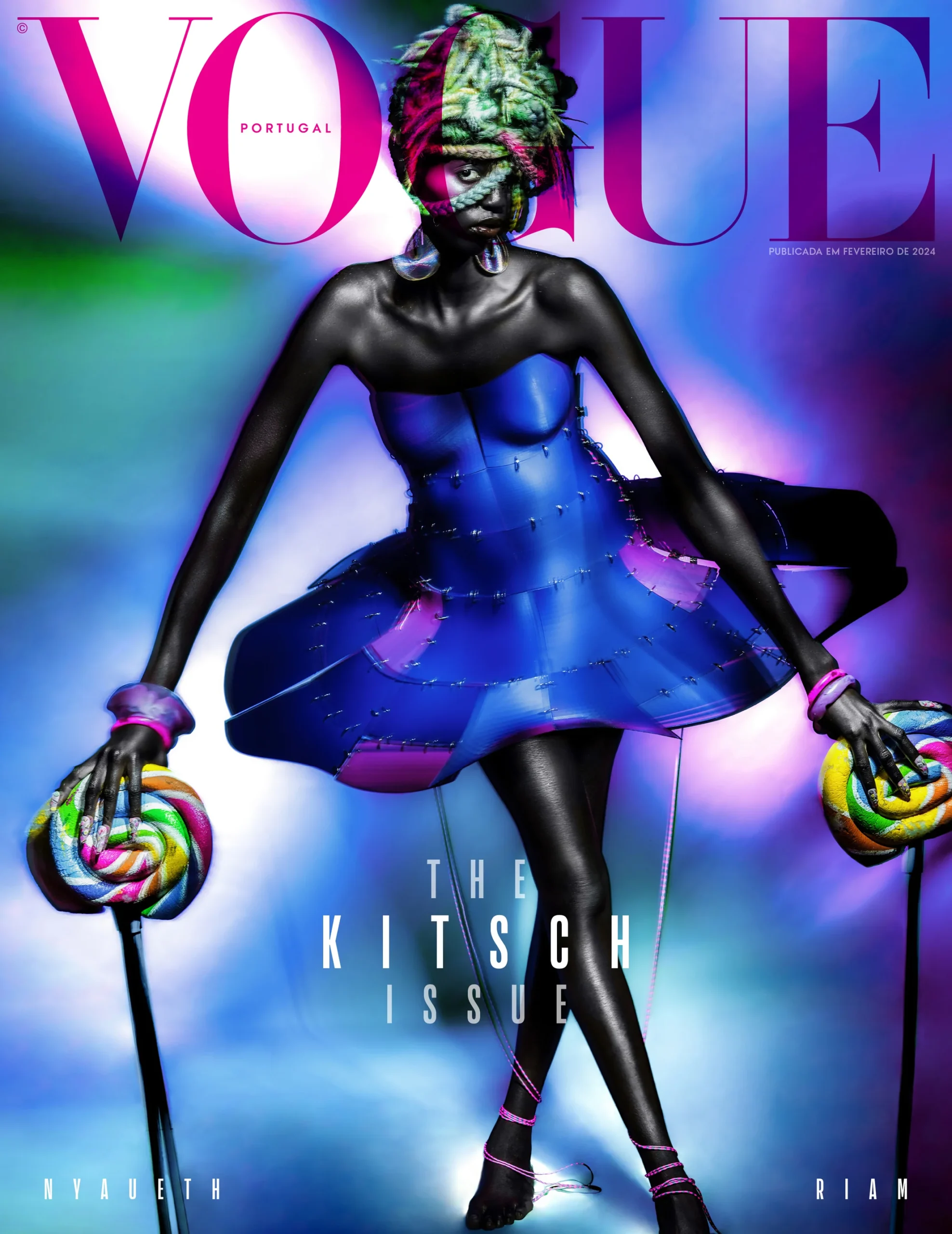
ANTI-SURVEILLANCE MASK
A 3D-printed shield against invasive surveillance systems
In today’s hyper-connected world, surveillance is omnipresent.
To address this issue, I designed the Anti-Surveillance Mask, a 3D-printed mask meticulously modelled to shape my face. Embedded within the mask is a circuit of RGB LED lights, programmed to produce a cascading effect of shifting colours. This disrupts facial recognition systems, making the wearable untrackable.
When worn, the mask effectively prevents cameras from tracking or identifying the wearer’s face, offering a practical response to the increasing invasion of personal privacy in public spaces.
Is the average number of times a person is recorded on camera each day in London
This reflects the growing presence of facial recognition systems in urban environments and raises concerns about privacy and individual autonomy.
Making fish skin pattern-based garments: developing digital tools for the fashion industry based on Ainu Indigenous Peoples tradition
The project was presented during the Responsible Fashion Series – Breaking the Mould conference at the University of Antwerp next week.
“The Ainu garment in the image is part of a study that hypothesises what would have happened if, during the Meji era, the Japanese had brought their Katazome indigo dyeing tradition, and blended it with the Ainu tradition of creating clothing from fish skin.” Elisa Palomino
I collaborated with Elisa Palomino on a project to digitally recreate Ainu fish skin robes, merging traditional craftsmanship with modern technology. Using CLO3D and Blender, I designed a 3D animation of the robe, capturing its intricate details and movement. The project aimed to promote sustainability by utilising fish skin, and to preserve cultural heritage through digital innovation. My work emphasises the potential for technology to enhance inclusivity and accessibility in fashion, blending traditional techniques with cutting-edge digital tools to create garments that honour both past and future practices.
In the book Technology, Sustainability, and the Fashion Industry: Can Fashion Save the World?
Chapter 6 is entirely dedicated to the project
Screenshots from the process while developing the animation
Using CLO3D, I designed the robe’s pattern and physical properties, while Blender allowed me to animate the scene with elements like a boat, ocean, and Ainu avatar. I developed the fish skin print pattern in Photoshop and adapted it in CLO3D to ensure realistic garment construction. The animation brought the robe to life, enabling viewers to explore it from different perspectives.
FUTURE PROJECT
Fish Skin, AI, and Open Education:
Ecological Entanglements and the Future of Cultural Heritage Preservation
In this project, Elisa Palomino (Researcher 2) and I (Researcher 1) are collaborating to combine modern technology with traditional Indigenous knowledge. Elisa plays a central role in this project and leads the documentation of an Alutiiq fish skin hood housed at the Smithsonian, working with an Alutiiq Elder to collect accurate data. This involves organising the visit and overseeing the Elder’s measurements and photographs of the artefact.
My role focuses on assisting in the creation of accurate 3D replicas using CLO3D. I will help train local youth in using the software to ensure the cultural significance of the artefacts is maintained while introducing them to modern preservation techniques. The culmination of this project will be a small exhibition at the Alutiiq Museum, showcasing 3D replicas of the 19th-century fish skin hood made by Alutiiq youth. This exhibition will symbolically and practically bridge the past and present, contributing to the ongoing repatriation and revitalisation efforts of cultural heritage.
THE TECHNIQUE
I create garments that go beyond the physical
My aim with this project has been to use the power of new technologies such as 3D printing, laser cutting and computer modelling, to reawake the attention to detail from the past and inform my vision of the future.
innovation
innovation
innovation
innovation
innovation
Balenciaga x Ana Córdoba
Central Saint Martins | 2021
A futuristic vision of BALENCIAGA made using 3D printing technology and implementing Arduino to develop an intelligent garment
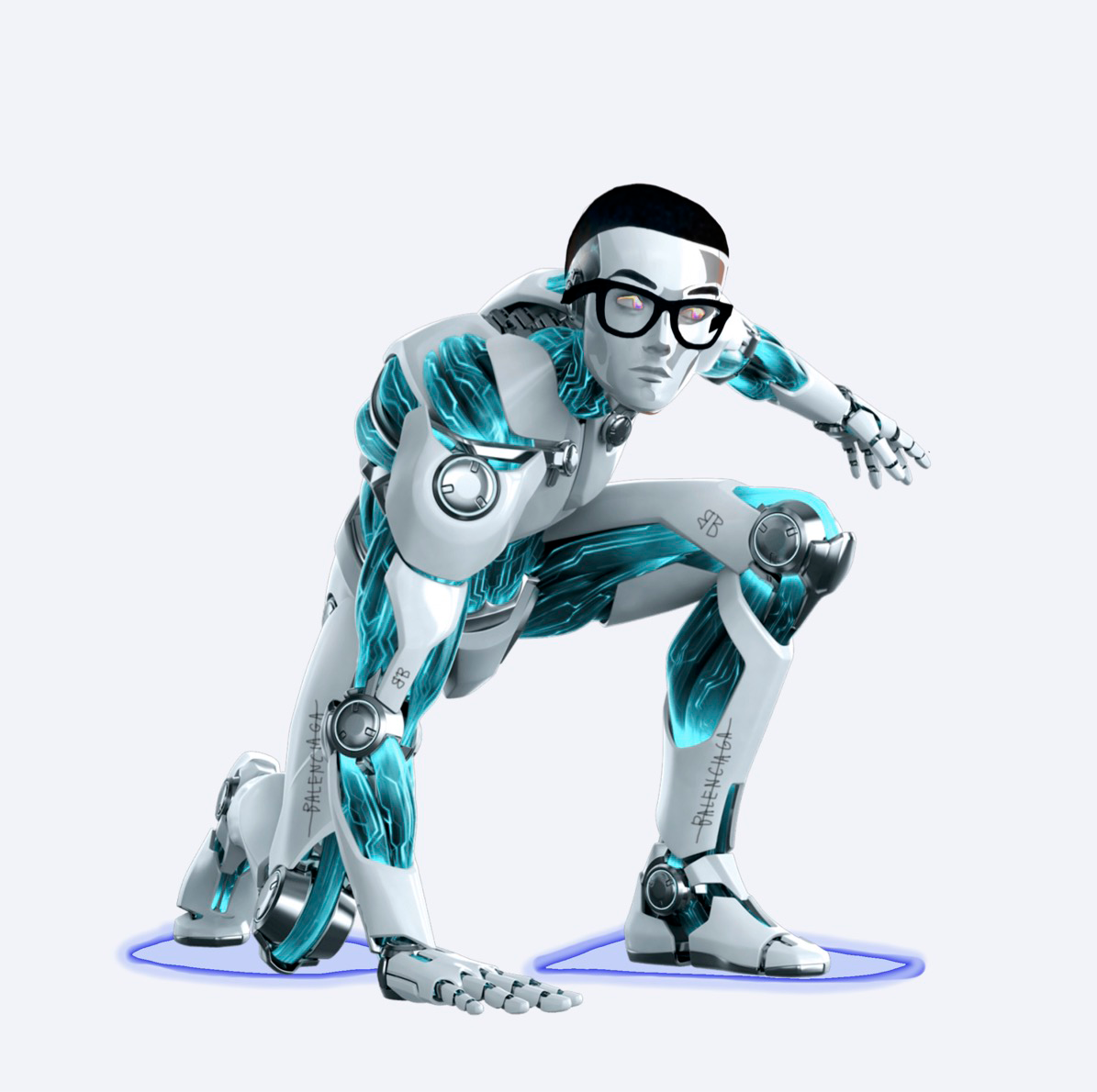
This hypothetical collaboration was a project that was part of my 2nd-year curriculum at Central Saint Martins.
A futuristic vision of BALENCIAGA made using 3D printing technology and implementing Arduino electronics to develop an intelligent piece that consists of a couple of sensors placed on the jacket that reacts to its environment — a garment with a social purpose and a possible solution.
This is — “A Collection For Everyone”
I’ve been trying to image Cristóbal in a world led by robots, and I created a digital avatar of his image which is the main character of this project. If you think about it, in our society body standards have taken a completely new role. Our body has become our temple, our place of worship. We look scared at the future, with the fear of losing our souls if robots take the world. But we haven’t realised we are like them, we are the product of a superficial society.
CHANEL x Lemarié
Central Saint Martins | 2021
I earned an internship at Lemarié (Group CHANEL) in Paris as one of the contest winners, after crafting a fully 3D printed dress.
I envisioned a futuristic Maison, developing a virtual avatar and modelling 3D-printed elements such as feathers, camellias, and textiles merged with digital prints. Exploring the potential of algorithms in predicting nature’s creation, we might replicate it in our image—a mechanized nature shaping future generations. All about embracing technology’s boundless power.
Runner-Up
VOGUE x BMW Contest
FABRICADEMY Course
This past September I enrolled in Fabricademy, a programme at the intersection of e-textiles, digital fabrication, and biology. My coursework has focused on computational design, soft robotics, e-textiles, wearables, and skin electronics, significantly expanding my expertise in these innovative fields.
I decided to pursue this course after meeting Behnaz in Boston last September, aiming to align my portfolio with the focus of her research group. This experience enabled me to develop projects closely connected to the group’s interests, which I believe was a key step in preparing for this programme.



